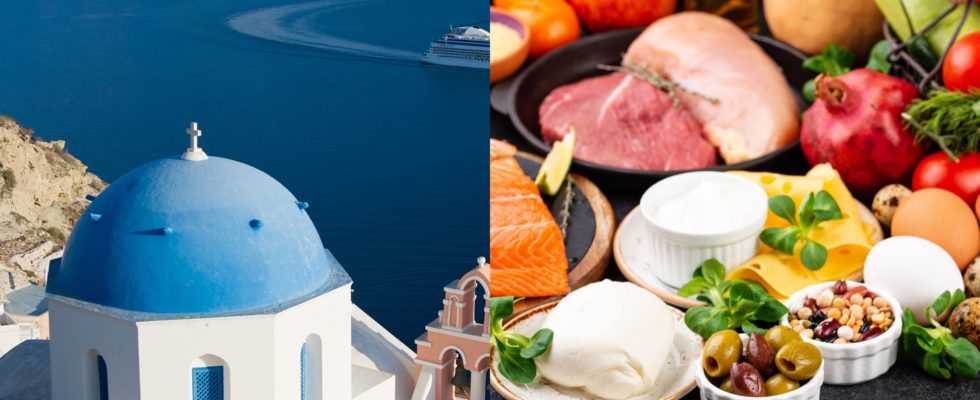Have you heard of or even tasted Mediterranean food? What is Mediterranean-style food, anyway?
Well, it’s a type of cuisine that’s not only delicious but also good for your health. Here in the Philippines, we often think of yummy food as being oily and greasy, but Mediterranean food is different—it’s healthier.
Curious? Keep on reading as we show you how a Mediterranean diet can change the way you think about tasty foods. Whether you’re looking to eat healthier, want to cook nutritious meals for your family, or just discover more delicious food, exploring Mediterranean food is exciting and fun!
Let’s get to it, shall we?
So… what is Mediterranean-style food, exactly?
You might be Googling right now, going, “What classifies as Mediterranean food?” Well, Mediterranean cuisine or cuisines are quite unique compared to well-known types like American, Japanese, or Chinese. It’s not tied to a specific ethnic group but is a collection of culinary practices from people around the Mediterranean Sea, including countries like Spain, France, Italy, Greece, Turkey, as well as regions in the Middle East and North Africa.
What sets Mediterranean food apart is its use of fresh ingredients and unique flavors. The diet mainly focuses on plant-based foods such as fresh vegetables, fruits, whole grains, legumes, and nuts. Olive oil is essential, serving as the main source of fat.
Additionally, fish and seafood play a big role, while red meat and dairy are less common but are still included. Herbs and spices are key for adding flavor, and there’s often a moderate consumption of wine, either red wines or white ones.
Origins of Mediterranean cuisine
The origins of Mediterranean cuisine are deeply rooted in the history of the various cultures that have lived around the Mediterranean Sea. These include ancient civilizations like the Egyptians, the above-mentioned Greeks, and Romans, who left their mark on the region’s food culture. The Mediterranean’s role as a major trading hub was crucial, as it connected Asia, Europe, and Africa, allowing for the exchange of spices and other ingredients that enriched local diets.
Significant influences also came from the Moors in Spain, who introduced ingredients such as rice, sugar, and almonds (and, totally unrelated but fun fact, also influenced arroz con pollo). Furthermore, the discovery of the Americas brought about new Mediterranean foods, including tomatoes, potatoes, and peppers, which added vibrant flavors and colors to the cuisine.
As these different cultures interacted and traded, they blended their culinary practices, creating a diverse and rich culinary tradition that spans the Mediterranean region, reflecting its historical connections and the natural bounty of its climate.
Common Elements of Mediterranean Cuisine
Now, you might be thinking that all these Mediterranean countries are different from one another, and it’s hard to memorize which country cooks what. So, to clear things up, let’s talk about the key ingredients that run through Mediterranean cuisine. Here’s what they generally share, no matter where they are in the Mediterranean region:
- Fresh, Whole Foods: Vibrant plant-based ingredients like vegetables, fruits, whole grains, nuts, and seeds dominate the menu.
- Olive Oil: This heart-healthy oil is a staple. Dishes will either be cooked in olive oil or have an olive oil drizzle.
- Herbs and Spices: The use of fresh and dried herbs like mint, basil, and thyme, along with spices such as cumin and saffron, adds depth and flavor to every meal.
- Nuts: Snack on them, toss them into salads or use them in desserts. Nuts like almonds and pistachios are everywhere.
- Whole Grains: Staples like couscous, quinoa, and bulgur wheat are common and provide a filling base for many dishes.
- Tomatoes: A key ingredient in sauces, stews, and fresh salads, tomatoes are a fundamental part of Mediterranean recipes.
- Legumes: Chickpeas, lentils, and various types of beans are crucial for adding texture and protein to meals.
- Meat and Seafood: Meats are usually grilled and seafood is abundant, reflecting the coastal lifestyle of many Mediterranean regions.
- Desserts: Sweet treats often incorporate fruits, honey, and nuts, sticking to natural sources of sweetness.
Why is Mediterranean food popular?
A simple reason why Mediterranean food is so popular is that the foods to eat here masterfully combine rich flavors, varied textures, and fresh ingredients in a way that’s deeply satisfying. It’s also easy to prepare: just toss the ingredients together, add a splash of olive oil, sprinkle some herbs and spices, and your meal is ready. It’s perfect for busy people looking for quick yet nutritious meals.
Mediterranean cuisine isn’t just tasty—it’s also good for your health. Benefits of the Mediterranean diet include lower and healthy blood sugar levels, reduced risk of heart or cardiovascular disease and Alzheimer’s, better weight loss, and improved cognitive function. In other words, the Mediterranean diet is delicious AND nutritious!
Examples of Mediterranean-style Food
Curious about what kinds of foods make up a Mediterranean diet? Check these out:
Baba Ganoush

Baba Ganoush is a creamy, smoky eggplant dip that’s a favorite in Mediterranean and Middle Eastern cuisine. It’s made by blending roasted eggplant with tahini, garlic, lemon juice, and spices. This appetizer is loved for its simple yet rich flavors and health benefits—it’s low in carbs, vegetarian, and gluten-free.
Enjoy it with veggies or pita chips, or spread it on sandwiches and wraps for a delicious taste of Mediterranean goodness.
Fun trivia: Baba Ganoush means “spoiled dad”. Who wouldn’t feel spoiled after eating this creamy, savory, and addicting dish?
Lentil Soup
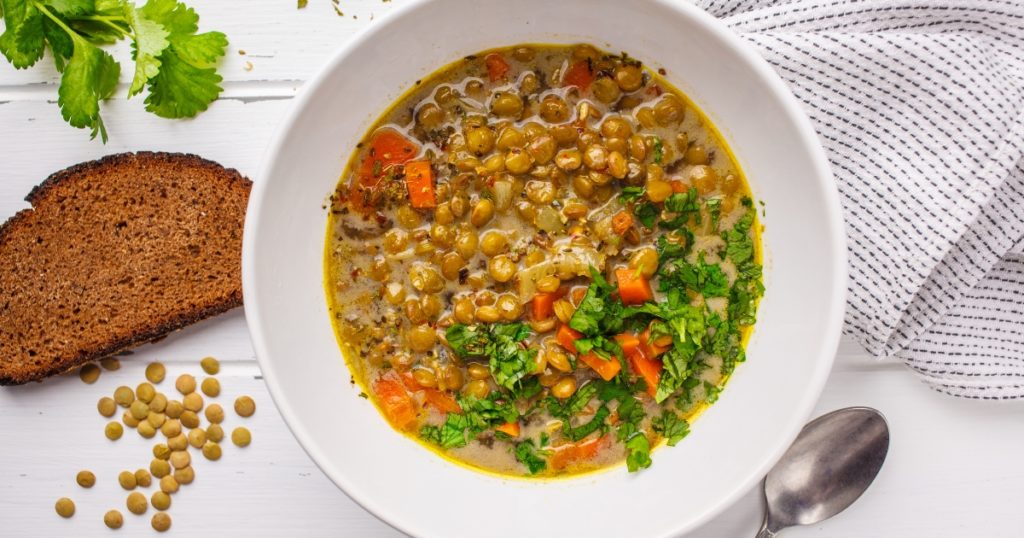
Lentil soup is a hearty and nutritious choice popular in vegetarian diets. Made from lentils, which come in colors like green, brown, and red, this soup is rich in protein and fiber. The soup includes vegetables and spices like onions, carrots, garlic, and cumin, offering a comforting and flavorful meal. It’s perfect on its own or served with a slice of crusty bread.
Cucumber and Tomato Salad

Cucumber and Tomato Salad is a staple in Mediterranean cuisine, known for its simplicity and freshness. It’s mainly made with cucumbers and tomatoes, often tossed with onions, parsley, and sometimes red peppers. For an extra touch, you can add some feta cheese.
Dress up the salad with a drizzle of olive oil, a splash of vinegar, and a squeeze of lemon juice. This light and healthy salad is perfect as a side or as a complement to other dishes.
Baklava

Baklava is a beloved dessert from the Mediterranean and Middle East, made with layers of thin filo pastry, filled with chopped nuts, and sweetened with syrup or honey. It’s popular in countries like Greece, Turkey, and Lebanon. The dessert varies regionally; some versions use walnuts, almonds, or pistachios, and may include spices like cinnamon or flavorings like rose water.
To make baklava, layers of phyllo dough are brushed with butter, filled with nuts, and baked until golden. After baking, a sweet syrup is poured over to soak into the layers. Baklava gets even tastier after a day, making it perfect to pair with black tea. This treat is not only delicious but also steeped in a rich history.
Here’s another fun fact: there’s so much debate about where Baklava came from. Greece and Turkey both claim it came from them, but one thing’s for sure: no one can contest that it’s one of the best desserts the Mediterranean cuisine produced.
Pita Bread
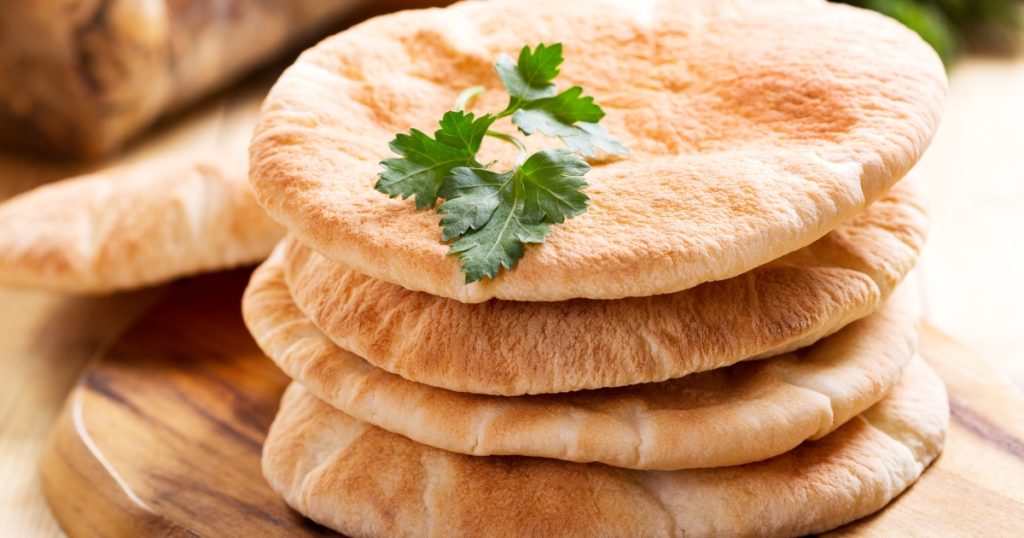
Your Mediterranean food experience will not be complete without Pita bread. This flatbread is made from a simple dough consisting of wheat flour, yeast, water, and salt. After mixing, kneading, and allowing it to rise, the dough is shaped into small balls, rolled out into thin circles, and baked at a high temperature. This process causes the bread to puff up, creating a pocket in the middle.
Pita is perfect for stuffing with fillings like falafel or vegetables and is commonly used for sandwiches and wraps. It also pairs wonderfully with dips such as hummus and baba ganoush. Whether used as a wrap or served plain as a side to various dishes, pita bread completes any Mediterranean meal.
Want to experience our class that involves pita bread? Check out Chef Max Nadin’s Pocket Bread class.
Shakshuka
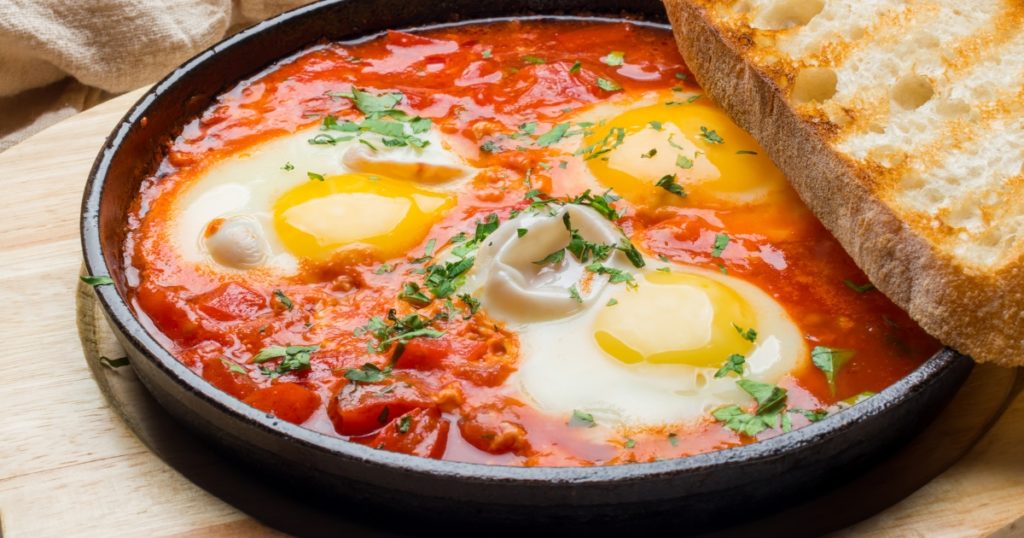
Shakshuka is a vibrant one-pot dish beloved in Mediterranean cuisine, known for its poached eggs simmered in a spicy tomato sauce with onions, bell peppers, and garlic. Originating from Tunisia, where it’s called “a mixture” or “shaken,” this dish packs a punch of flavor with its fresh herbs and a drizzle of extra virgin olive oil.
It’s a versatile meal that can be enjoyed for breakfast, brunch, lunch, or dinner and is often served with bread like pita or challah for dipping into the rich, flavorful sauce. Simple to make yet rich in taste, Shakshuka proves that nutritious and delicious can indeed coexist beautifully in a single dish. Whether you stick with the classic recipe or add your own twist with different spices or vegetables, it’s a satisfying meal that’s sure to impress.
Labneh
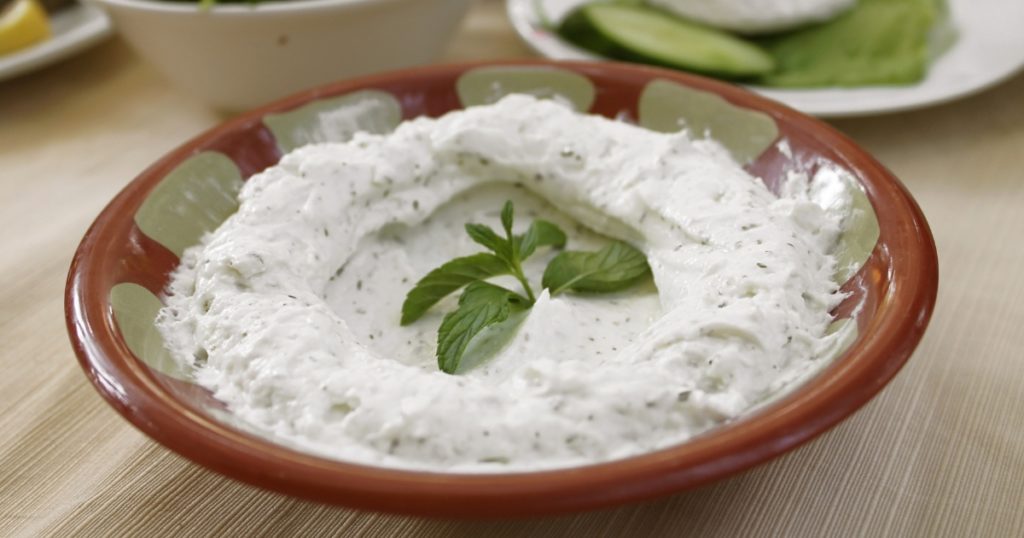
Labneh is a thick and creamy Middle Eastern yogurt dip, made simply by mixing yogurt with a little salt and straining out the whey. Often called labneh cheese due to its thick, spreadable texture, it has a tangy, rich flavor that pairs wonderfully with warm pita bread or pita chips, often drizzled with extra virgin olive oil.
You can also use labneh as a sandwich filler, or as a tasty topping on flatbreads like manaqeesh. It’s a common breakfast or snack item in Middle Eastern cuisine and can be customized with different levels of salt or marinated in oil and herbs for an extra flavor boost. Whether you call it labaneh, labne, or lebnah, it’s a versatile and delicious addition to any meal.
Want to make Mediterranean-style food at home?
Ready to try making Mediterranean-style food at home? It’s easier than you might think! That’s especially since here at The Bailiwick Academy, you can learn Mediterranean-style food recipes with Sir Rodney Martinez latest cooking class: Mediterranean Medley!
Enroll and you’ll no longer be wondering “What is a Mediterranean food menu made of,” because you’ll learn to make the following Mediterranean dishes:
- Baba Ganoush
- Labneh
- Shawarma Pita
- Hummus
- Shawarma Rice
- Falafel with Tzatziki
Just like all the the classes at The Bailiwick Academy, it’s an easy-to-follow class, perfect even if you’re a beginner. You’ll not only learn the basics of Mediterranean cuisine but also gain skills that go beyond the basics—once you’re done, you might be on your way to starting a Mediterranean food business!
So what are you waiting for? Sign up at The Bailiwick Academy and start your journey to mastering the art of Mediterranean cooking, exploring vibrant flavors and healthy recipes right from your own kitchen.
—
Keep coming back to The Bailiwick Academy blog for more cooking and baking tips, kitchen tricks, and much more!

